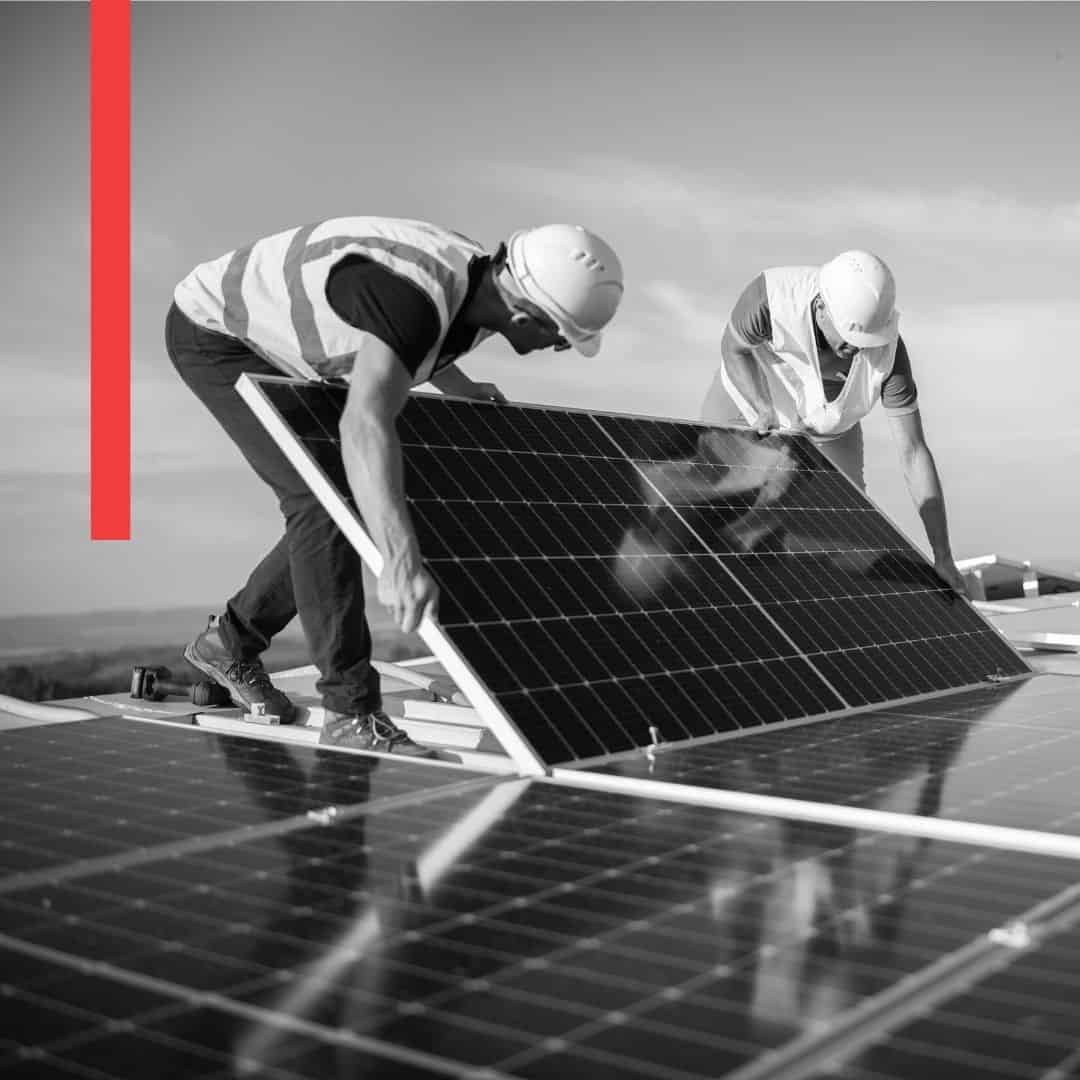In the real estate industry, it’s becoming more important than ever to monitor the greenhouse gas (GHG) emissions of your properties.
From REITs to independent owners, everyone’s facing mounting internal and external pressure. Across the US, regulators are creating new requirements, investors are pushing for more sustainability commitments, and communities are looking for greater environmental concern.
GHG emissions have become real, quantifiable metrics for orgs of all scales, and there’s a standardized classification system to track and report these numbers according to source. These GHG categories, otherwise known as scopes, allow orgs to better understand their climate impact; however, commercial properties often struggle to account for scope 2 and 3 emissions. They come from third-party sources like tenants, making them difficult to gauge.
If you’re looking to measure and reduce your scope 2 and scope 3 emissions, onsite solar and King Energy’s model can help. Read on to learn about scope 2 and 3 emissions, why they matter, and how your portfolio can report them.
What are Scope 2 and Scope 3 emissions?
Defined by the World Resources Institute’s Greenhouse Gas Protocol, the different scope categories help businesses quantify and manage their emissions. By creating a universally accepted system, the group seeks to align industry and government on climate initiatives.
At a surface level, their framework separates greenhouse gas emissions into 3 distinct categories: scope 1, scope 2, and scope 3. Scope 1 is easy to understand, as they are direct emissions from sources that the reporting company owns or controls. Scope 2 and scope 3 are a little more difficult to define.
What are scope 2 emissions?
These are indirect emissions from the generation of purchased energy that the reporting company consumes with their operations. Most commonly, these greenhouse gasses come from the company’s utilities like electricity, steam, heat, and cooling used for common areas.
Because they occur from sources that are not owned or controlled by the organization, like a power plant, they can be difficult to reduce. Scope 2 is relatively simple to report, as commercial properties typically have access to statements for their energy usage.
What are scope 3 emissions?
Scope 3 emissions are all indirect emissions that come from sources not owned or controlled by the reporting company, but are a consequence of its activities. The category is broad and can range from employee commuting to activities in leased assets, like tenant energy usage.
Also known as value chain emissions, scope 3 are complex and hard to account, but they make up a vast majority of greenhouse gas emissions. ESG managers often need to dig deep or use complex platforms to accurately report scope 3 numbers.
Why are scope 2 and scope 3 emissions difficult to report?
As both scope 2 and 3 emissions result from an organization’s indirect actions, it’s difficult for them to track and measure for every touchpoint that generates greenhouse gas. Plus, as real estate portfolios become more complex, the number of indirect sources increases—adding difficulties to tracking.
At a high level, organizations have difficulties reporting scope 2 and scope 3 emissions because of a:
Lack of available data
Organizations of all scales struggle to find scope 2 and scope 3 emissions data both up and down their value chain. Scope 3 emissions, in particular, are largely outside of their control, forcing them to often rely on a third-party that may not track those specific metrics. Some indirect sources may also want to avoid disclosing their greenhouse gas emissions to corporate partners.
Lack of reliable sources:
REITs and ESG managers often have issues finding accurate greenhouse gas numbers, as they come from indirect sources with potentially different tracking methods or unreliable reporters. A third-party may not provide an full accurate picture of their emissions or have the same data hygiene standards as a larger org.
Complexity of network
Many organizations face increasingly elaborate networks of partners, making it difficult to account for the volume and number of sources creating indirect emissions. In particular, scope 3 reporting requires a full picture of all emissions from indirect activities, creating challenges for those operating at scale.
Why is it important to report scope 2 and scope 3 emissions?
While often difficult to quantify, reporting scope 2 and scope 3 is an important part of managing a modern, responsible organization. Monitoring indirect greenhouse gas metrics are not only good for the environment, they also offer valuable insights into your investment’s health.
Reporting on scope 2 and scope 3 emissions is important for several reasons:
Offers a full picture of sustainability
In the past, many organizations relied on scope 1 emissions, which only tells one side of the ESG story. Scope 2 and scope 3 often represent a majority of an organization’s greenhouse gas emissions, making reporting an important part of understanding the real environmental impact of an org.
Creates organizational compliance
Many organizations need to report their overall ESG performance to their investors, as well as comply with evolving local, state, and federal regulations. Reporting on Scope 2 and scope 3 enables them to stay aligned with their commitments and reduces the risk of legal action.
Presents new opportunities for efficiency
When organizations can quantify the impact of their indirect sources, they can also look to remove heavy greenhouse gas producers and onboard more efficient partners. Oftentimes, excessive greenhouse gas production is associated with an increased cost and wastefulness, presenting orgs with new opportunities to save.
How can solar reduce scope 2 and scope 3 emissions?
For commercial portfolios and REITs, onsite solar can create a significant reduction in both scope 2 and scope 3 emissions. Because it reduces or eliminates the need for grid energy from fossil fuels, organizations see lower greenhouse gasses overall.
It’s also simple to implement options for many buildings, making the most impact for minimal effort and upfront cost. Oftentimes, solar partners will cover the cost of installing, operating, and maintaining solar systems across a commercial portfolio, paying roof rent and charging tenants for usage.
Solar primarily impacts scope 2 and scope 3 emissions by:
Lowering common area grid reliance
When solar is onsite, commercial properties purchase renewable energy to run their operations and power common areas instead of relying on electricity from the grid.This impacts the volume of GHGs reported as scope 2, as the building is purchasing and using energy produced from a renewable source rather than fossil fuels.
Decreasing tenant carbon usage
A solar system also provides renewable energy to tenants, reducing their carbon footprint in the process. Their energy mix becomes less dependent on grid power from fossil fuels, lowering the amount of greenhouse gasses they produce as a result of their operations.
As scope 3 reporting requires emissions reporting from outside activities, like renters running their businesses, commercial properties can help tenants and themselves in the process. Their tenants get renewable, low-cost energy, and the building reports lower scope 3 emissions.
How does King Energy Solar help report scope 3 emissions?
While many solar providers can create systems for commercial buildings, King Energy’s solar platform uniquely simplifies scope 3 emissions reporting for ESG managers and reporters. Their system provides valuable, accurate data to streamline complex indirect emissions accounting.
Typically, scope 3 reporting is difficult for multi-tenant buildings because of the energy separation between landlord and tenant. Since every rented unit is on its own meter, the property has no way of accurately monitoring tenant energy use. To get data through this system, owners must collect self-reported data from each individual tenant, which can be time-consuming and invasive.
King Energy solves these issues and enables scope 3 reporting at scale by providing:
Insights on tenant energy use
King Energy’s model allows them to securely provide property owners with data on individual tenant energy usage down to the KwH.
Because of their proprietary OneBill software, all tenant energy use is logged securely in their system. When tenants use energy at their business, the platform captures accurate data on their energy mix and greenhouse gas emissions.
REITS and property managers can access these metrics and factor them into their overall scope 3 reporting. They can also use the OneBill API to pull this data into a larger sustainability reporting system used for ESG benchmarks.
Forecasting database of tenant bills
Their program also offers property owners valuable insight into the potential scope 3 impacts of existing or future tenants through a database of thousands of tenant bills. Because they have access to client usage across all the sites they serve, they can accurately predict the energy needs of a variety of different tenant types using aggregate business data.
To forecast indirect greenhouse gas emissions, King Energy just needs the business type and square footage of a tenant. Using the database, they can estimate their energy usage and carbon impact just by comparing the bills of comparable businesses across their solar portfolio.
This offers prospective sites an opportunity to view solar’s impacts on scope 3 emissions before even installing a system on site. By calculating the scope 3 of all their tenants before and after solar, they can confidently benchmark ESG performance for the future.
Simplifying reporting at scale
Scope 2 and scope 3 reporting is a complex component of responsible ESG strategy, but King Energy’s solar model simplifies the indirect aspects for commercial properties. With easy visibility into tenant energy usage, reporting becomes more accurate and attainable for portfolios regardless of scale.
Plus, the solar program comes at no cost to investors, owners, or managers. With King Energy, tenants receive discounted renewable energy, and property owners see an increased rent roll and property value—plus easy access to reporting metrics.
Contact our team today for a personalized proposal for your building.


